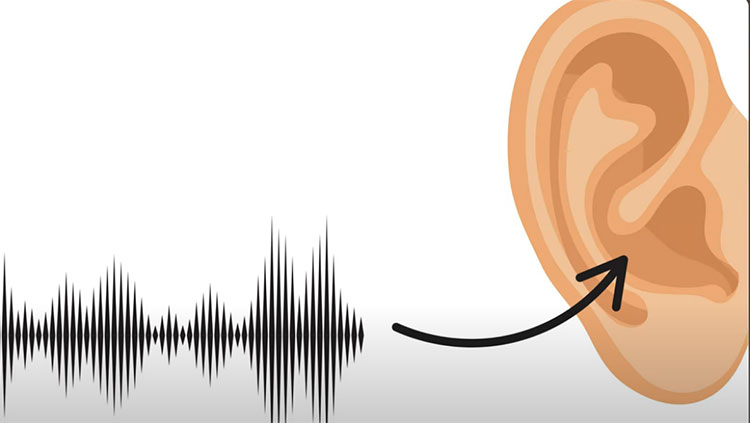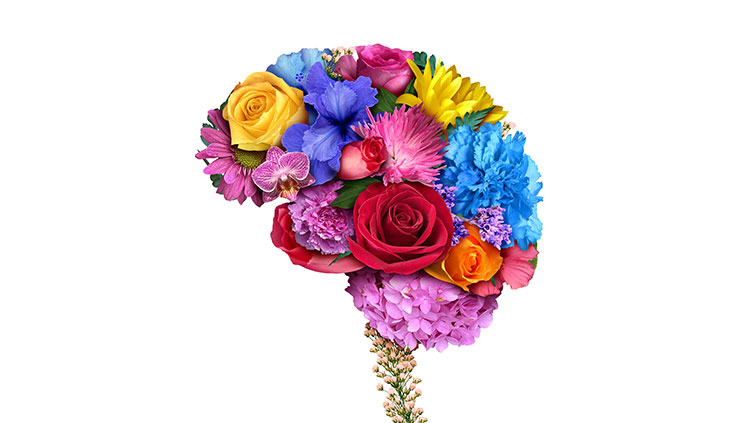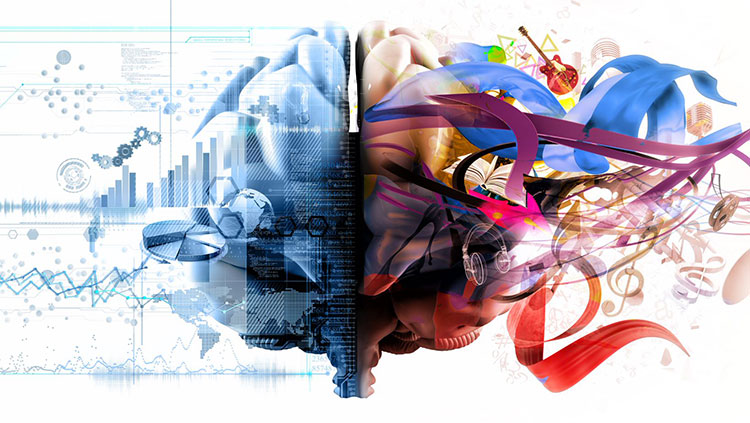The Three M's: Music, Memory, and eMotion
- Published28 Oct 2022
- Source BrainFacts/SfN
Music can entertain us, pep up our workouts, and even make us sad. That’s because the auditory network activates several different parts of our brains. One is the system that processes our emotions and long-term memories, explaining why we may feel nostalgic when listening to music. And music can trigger the release of chemicals that ease pain, making exercise easier. Scientists are studying whether music could be used to treat patients with certain memory and movement disorders, including Alzheimer’s disease and Parkinson’s disease.
This is a video from the 2022 Brain Awareness Video Contest.
Created by Laurel Phan.
CONTENT PROVIDED BY
BrainFacts/SfN
Transcript
This is Dave.
Dave has music blasting through his headphones on an everyday basis. He listens to pop music as he boards the bus, he listens to punk rock music as he works out, and he listens to bossa nova music as he does his work.
Dave represents the majority of us. Most of us are surrounded by music in our everyday lives, whether we listen to it for enjoyment or serve as the actual performers. Even though music is super prevalent in our everyday lives, we don’t ever stop to think of how it’s being processed in our brains. How do songs get stuck in our heads? Why does it make us happy or sad? They’re questions that have been asked before by previous scientists, but it’s only pretty recently that scientists have been able to study the phenomenon that is listening to music.
When you press play, sound waves enter your ear, hit the eardrum, and hair-like cells convert those wave vibrations into electrical signals. The cochlea sends those electrical signals down the auditory nerve and through what is called an auditory network. From there it will travel down different pathways and activate different parts of the brain.
Which parts of the brain, you may ask?
Well first, the music is perceived in the auditory cortex, a part of your temporal lobes. It’s common to think that only the right side of the brain processes music, but both sides of the brain are actually active. Researchers know this because of EEGs and fMRIs, which are tools used to examine brainwaves and the brain’s anatomy. With this technology, researchers are able to see what areas of the brain are activated or not activated with respect to a control task when music plays. For example, when Wanda improvises a song, areas like the prefrontal cortex, which have a lot to do with pre-planning, might not be as activated as much as it would normally be.
The auditory network is also connected to the limbic system. The limbic system contains structures known to process emotions and are the reason why we form emotional responses to music. The limbic system is also involved in the formation and retrieval of long-term memories, in which the hippocampus would act like a carrier center. That could explain why music could evoke feelings of nostalgia and old memories. Certain songs could take you back to when and where an event was happening when you listened to it. The cool thing is that songs trigger memories associated with it, not the ones built into it. You might listen to a sweet love song but be reminded of you and your ex’s bitter past.
Another part of the limbic system that interacts with the auditory network is the nucleus accumbens. This part of the brain is super involved in seeking reward, motivation, and eventually addiction. Studies show that when you listen to fast-paced music, your nucleus accumbens releases a chemical called dopamine and therefore activates your reward system. Because of this, music can be an addictive drug because it acts on the same part of your brain as hard drugs, such as cocaine, do.
However, these drug-like traits have some speculated benefits. Studies have found that natural opioids are released when listening to music, which makes exercise hurt less and allows athletes to exercise harder and longer as it distracts from aching joints.
EEG scans have also found that music leads to a phenomenon called entrainment. Entrainment is a process where a person’s neurons start to pulse to the same rhythm as the music they’re listening to. This is responsible for movements like swaying to the beat or tapping your foot. This phenomenon has also led to the development of neurologic music therapy. Music can be an effective way to change and treat our brains. A study from the Journal of Prevention of Alzheimer's Disease determined that music memory is stored in a different area than the rest of our knowledge, and is not entirely reliant on the hippocampus. This was concluded after they discovered musicians who’ve developed retrograde amnesia, had forgotten most past events, yet could still read and play their instrument.
Specific music brings back a special moment in a patient’s life, triggering vivid memories in those with Alzheimer’s and dementia. Playing a tune for patients of Parkinson’s disease, a sickness that limits movement, stimulated their brain circuits and allowed the patients to walk faster or slower. Researchers hope musical memory could treat Parkinson’s, Alzheimer’s, strokes, brain injuries, amnesia, and depression in the near future.
Also In The Arts & The Brain
Trending
Popular articles on BrainFacts.org

















